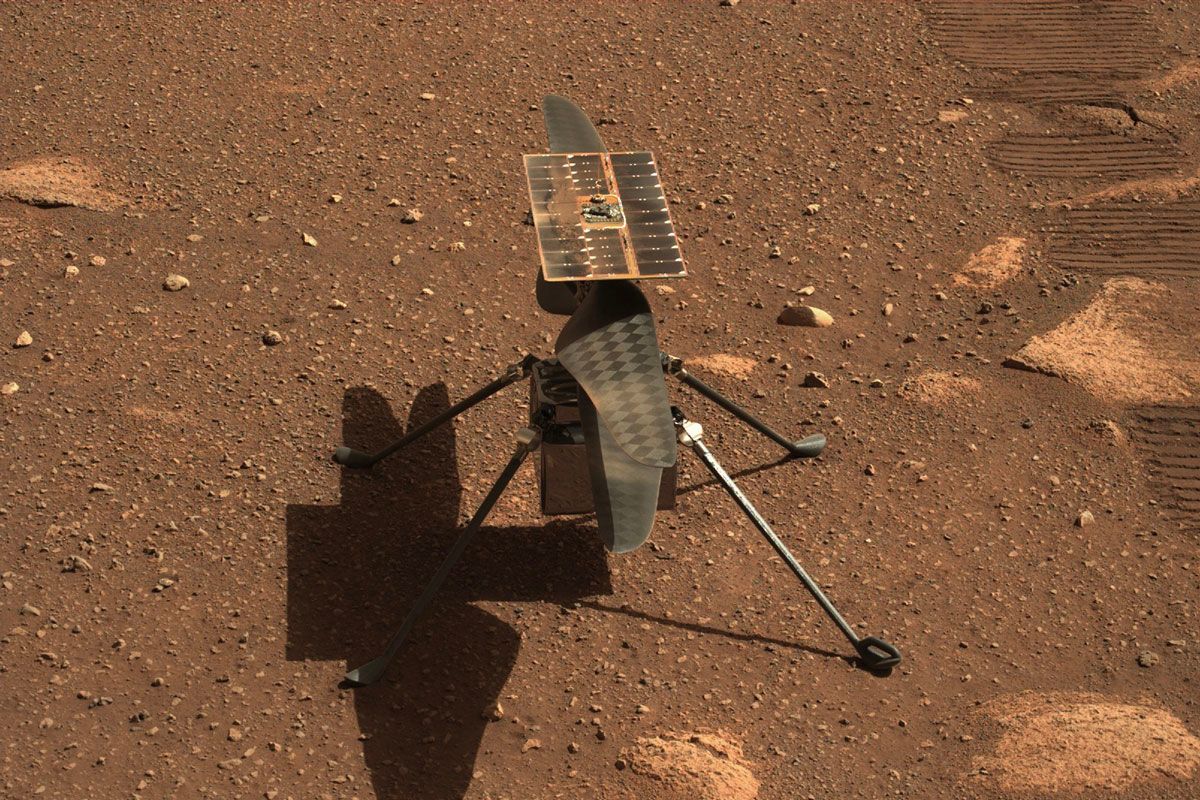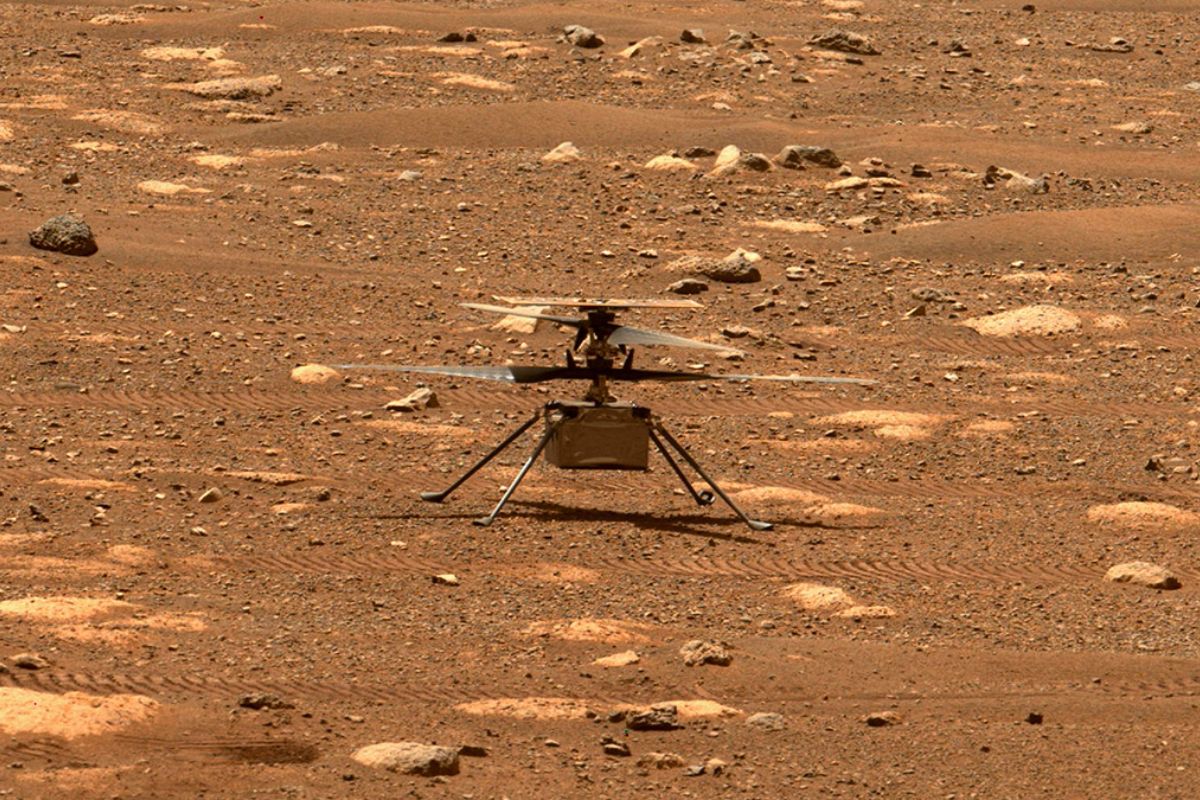According to the space agency, NASA, the Ingenuity mission Mars helicopter, which successfully accomplished the first-ever powered flight on a different planet, has concluded its mission of almost three years. This decision comes after the helicopter experienced damage to its rotor during its recent excursion.
Table of Contents
The diminutive aircraft, roughly the size of a tissue box, took to the skies of Mars on April 19, 2021, after hitching a ride to the planet aboard the Perseverance rover.
Ingenuity, initially designed to demonstrate feasible flight in Mars’ low-density atmosphere through five experimental runs, exceeded expectations by being deployed 72 times, accumulating over two hours of flight duration in brief excursions.
“The Ingenuity’s groundbreaking technology has revolutionized our understanding of exploration, revealing unprecedented aerial mobility capabilities,” said Lori Glaze, Director of NASA’s Planetary Science Division, durring a press conference on Thursday.
The purpose of the mission has changed over time, and now it serves as a flying explorer that helps its partner, which moves on wheels, to look for evidence of ancient microscopic organisms that existed billions of years ago on Mars, during a period when the planet had more water and higher temperatures than it does now.
Ingenuity’s endurance far exceeded all predictions, triumphing over obstacles such as sandstorms, rugged landscape, a malfunctioning sensor, and extreme cold.
During the winter months, the solar-powered heating system failed to function consistently, causing the flight computer to malfunction and shut down. This prompted engineers to develop new procedures to address the issue.
NASA’s Ingenuity helicopter, the plucky rotorcraft that captured the hearts of many with its remarkable Martian exploits, has now completed its final mission, as announced by NASA administrator Bill Nelson in a recent video message.
Just as the Wright brothers’ groundbreaking achievements in aviation paved the way for future flights on Earth, Ingenuity’s innovative technology is pioneering the way for smarter and safer human missions to Mars and beyond.
Emergency Landing- Crash landing of Ingenuity Mission
The lightweight helicopter, weighing in at four pounds, remains operational and in contact with mission control. However, images from its previous flight on January 18 reveal that one or more of its rotor blades were damaged upon landing, rendering it unable to fly.

After thge last flight, NASA experienced an unforeseen loss of communication, but it was later restored. However, the brief respite for space enthusiasts was short-lived.
The data revealed that the helicopter successfully reached its intended height limit of 40 feet (12 meters) and remained stationary at that altitude for a duration of 4.5 seconds.
However, the momentary loss of power happened right as it was descending towards the, at an approximate height of three feet.
According to the statement, it took a few days for images to show the extent of the damage to the rotor blade. The investigation is ongoing to determine the reason for the loss of communication adn the position of the helicopter when it landed.
The damaged blade appears to have come into contact with the Martian surface during the landing process, according to NASA’s Jet Propulsion Laboratory Ingenuity project manager Teddy Tzanetos, who spoke to reporters on Thursday. This collision resulted in the loss of approximately 25% of the blade’s length.
He provided an explanation, stating that a significant portion of our thrust capability has been lost. Additionally, he mentioned that it is impossible to determine whether the rotor strike or the loss of communication occurred first.
“Tzanetos predicts that we will eventually experience a disconnection, but the time frame remains uncertain, spanning from a few days to several months.”
Tzanetos believes taht the knowledge gained from Ingenuity’s mission will hvae a lasting impact on Martian flight operations for yersa to come.
He mentioned that it should not come as a shock to in the coming years when the initial astronauts, both male anbd female, step foot on the surface of Mars, and there are numerous aircrafts soaring through the air.
Dragonfly, a rotorcraft powered by nuclear energy and about the size of a car, is scheduled for a mission to Titan in 2028. This mission will carry on the legacy of Ingenuity, demonstrating the innovative spirit and advancement in space exploration.
